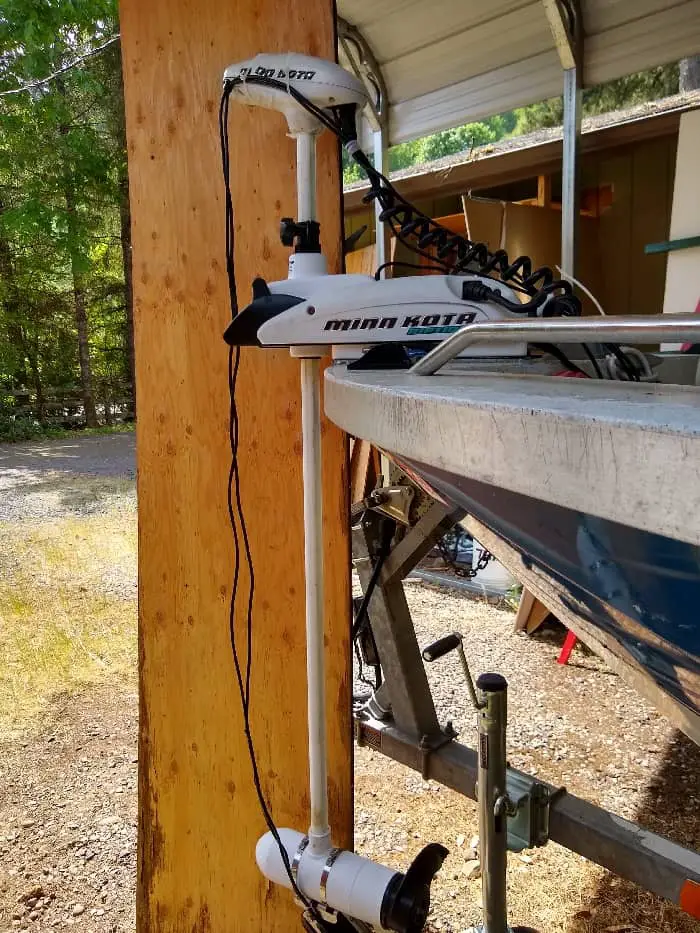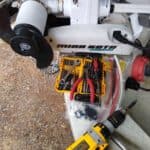There are many choices a boat owner makes to get their outing to be more enjoyable and more productive in terms of fishing. One of the biggest choices is what motor to purchase. In the search for the best fishing experience, I asked myself, “is an electric trolling motor right for my boat?”. For me, the answer was hands down “Yes” but, for others, the answer to this question can be very complicated. I am assuming that you need a trolling motor, or upgrade so I am going to compare your two options.
Electric trolling motor Vs. Gas
That is the question that we will break down in this post, but there are so many factors to this problem so we are going to compare each of the pieces of the puzzle until we can get a complete picture.
Sound level:
Sound level is where I like to start because I treat fishing as relaxation before sport, so let’s start there. I currently use an 8ph 4stroke Mercury trolling motor, and overall, it is not loud at low speed. I have found myself talking on the phone while running my gas trolling motor without a problem but everyone on the other end of the line knows what I am doing because they can hear the engine in the background. As far as my electric motor it makes a slight hum, and if a boat passes or there is environmental noise you can’t even tell it is running at average trolling speeds. In the case of sound, the electric motor is a clear winner.
Horse Power:
Horsepower is a tricky category because electric motors are measured in thrust not hp and the final output of this can vary significantly based on factors including prop size, prop pitch, and even if the boat is moving through the water or at a dead stop. From my research manufacturers like Minn Kota has put their ratings in thrust because they can put a motor in a controlled environment and get a uniform reading to rate all their products. Then they can use a formula to show the result, here is Minn Kota’s equation for hp {motor amp draw times voltage equals wattage. Wattage divided by 746 equals approximate hp}
(Minnkotamotors.com, 2019) which has no reference to thrust. I ran my 80lb thrust motors maximum draw through this formula and got 1.8 hp, which is far less than my 8hp kicker. Something to note that Minn Kota says that their props are designed for the low-end torque so “the boat respond immediately” and to “hold the boat in high winds.” (Minnkotamotors.com, 2019)
Fuel:
I thought I would never have to put gas in my motor, welllll… a big topic for an additional post but the short answer is electric motors don’t use gas, but I found that I ran the batteries dead many times and had to switch over to the gas trolling motor that ran off my main gas tank without issue. To keep it short your electric motor starts the day with a full tank of “gas” (batteries) and when they are empty, that is usually the end. Battery capacity and a connected main motor charger can help.
Click here to read my post on batteries
Maintenance:
Everything on a boat requires constant maintenance, and that is my biggest fail, lol. Let’s get real a boat is much work, and because of the environment you use it in and typically store it in it can be a rough life. You take your boat to play on the water then you bring it home and park it in the driveway. Maybe your boat gets winterized, or if you are me you increase the fuel stabilizer and put a quick release tarp on it for those winter fishing trips, but it is still a damp setting. There are manufacture recommendations on when to service your gas motor usually based on hours used and general time, but for me, my gas trolling motor gets a dealer service once a year, and if I use it frequently, I clean it up and change the fluids to keep it on schedule.
The electric trolling motor is a whole different story. First, you need to check your batteries regularly, if they are lead-acid every time before you charge them. I like to go through all the connections twice a year and a third time if the motor is acting strange or losses power rapidly through the day. If you install your engine think easy access but not exposed and if you have a dealer install it takes a minute to tell them that you want that.
Performance:
If you minus the total power, it is hard to beat an electric motor in this category. Speed can be adjusted in great detail and remain consistent as long as your batteries do. Ease of use is another great plus, with most electric trolling motors having a remote control you can move your boat with a click of a button. Furthermore, more advanced remotes have a full GPS autopilot that controls speed and direction or can even keep you on an anchor point. Trolling in a straight line can be a challenge with stern-mounted motors and all gas engines are stern-mounted and some electric engines also. With a bow mount electric motor, they tend to pull your boat in a straight line which helps with consistent trolling action. Back trolling is impressive with a slow, steady slide right into the fish’s mouth. On high flows like below Bonneville Dam, I use my gas trolling motor for a little help so I can run the electric motor on half power and make my batteries last through the day.
Finally, on performance is chart plotter integration, I have my motor plug into my depth finder (via I-Pilot link). This feature can shine through on a lake where you want to fallow the shore or where you would like to turn around and follow the same path back to where you started. At the touch of a button, your boat instantly turns around and, in my case, back-track within ten feet of the path I took back to the start. Back-tracking can be a great tactic when you go over a school of fish and want to repeat your pass quickly.
Cost:
Cost is the most challenging category of all because basic bow mounts Minn Kota motors can start just over $300 and easily run above $3000 with all the bells and whistles plus infrastructure. The closest package to the engine I use as of this post is running $2150 and is 6 inches longer than what I am currently using, which would not be a problem for my boat. Battery prices can vary widely, but as a baseline, I would plan on $300 each for a quality battery. Chargers also vary widely so for this example a small Minn Kota 2 bank smart charger (mk212pc) is going around $160. You need to add the cost of wires, breakers, and battery switches, plus install. The current setup I am running on my boat would cost me just over $4000 to purchase as of this post.
Do you see a pattern forming here? if the cost is an issue a high-end electric trolling motor might not be the way to go for your boat? Fall of 2018 I bought a new Mercury 8hp electric start motor with an extended warranty for $2600 from a dealer, ready to use.
Conclusion:
My bottom line is the performance, it is hard to beat an electric trolling motor.
Knowing everything I know about electric trolling motors I would still do it all over again but I might have bought all high-end at the beginning and ultimately saved money. Start with the top-of-the-line infrastructure, rated for the next larger size motor, and half of your issues can be eliminated. I did not and ended up replacing many parts and running new wires with saltwater connectors throughout time.
Besides the quiet of the electric trolling motor my other favorite thing is no motor exhaust, this is not as big of an issue now that most people use four-stroke trolling motors, but still, it makes a difference.
Click here to read my post on deciding if you should install your motor yourself
References:
Minnkotamotors.com. (2019). [online] Available at: https://www.minnkotamotors.com/support/faqs/how-does-horsepower-compare-thrust-how-do-i-convert-thrust-horsepower [Accessed 15 May 2019].
Minnkotamotors.com. (2019). [online] Available at: https://www.minnkotamotors.com/sites/minnkotamotors_site/files/formulas_9-12-14.pdf [Accessed 16 May 2019].



